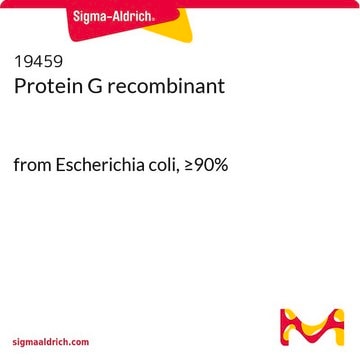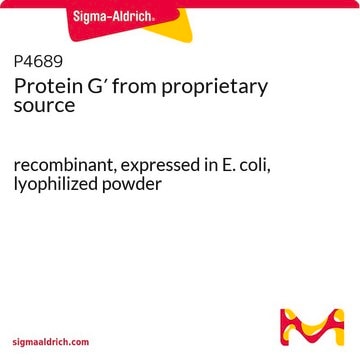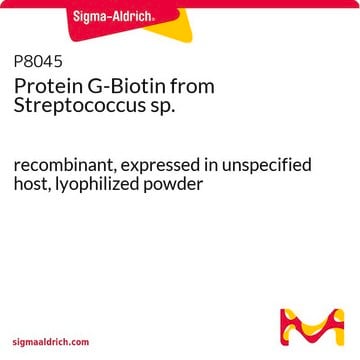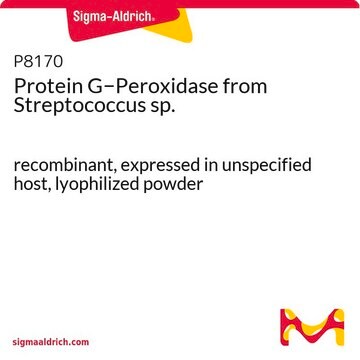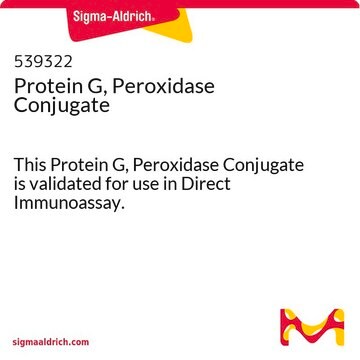08062
Protein G′ from Streptococcus sp.
recombinant, expressed in E. coli
Sinonimo/i:
IgG F(c)-Receptor
Autenticatiper visualizzare i prezzi riservati alla tua organizzazione & contrattuali
About This Item
Prodotti consigliati
Origine biologica
bacterial (Streptococcus sp.)
Livello qualitativo
Ricombinante
expressed in E. coli
Forma fisica
lyophilized solid
PM
~30 kDa
Capacità
~5 mg/mg, solid binding capacity (IgG)
Temperatura di conservazione
−20°C
Descrizione generale
Protein G, a cell wall protein, is obtained from group G streptococci. The extracellular part of this protein is made of two/three small domains or serum albumin binding (GA domains) and two/three immunoglobulin (IgG) binding domains (B domains).
Genetically engineered truncated protein G; retains affinity for IgG, but lacks albumin and Fab binding sites and membrane-binding regions.
Applicazioni
Protein G′ from Streptococcus sp. has been used in in vitro actin labeling assay.
Azioni biochim/fisiol
Protein G can bind all the human and mouse IgG subclasses. It can bind to both the fragment crystallizable (Fc) and antigen-binding fragment (Fab) components of the antibody.
Stato fisico
lyophilized powder in a Tris-HCl buffer, pH 7.5
Codice della classe di stoccaggio
11 - Combustible Solids
Classe di pericolosità dell'acqua (WGK)
WGK 3
Punto d’infiammabilità (°F)
Not applicable
Punto d’infiammabilità (°C)
Not applicable
Dispositivi di protezione individuale
Eyeshields, Gloves, type N95 (US)
Choose from one of the most recent versions:
Possiedi già questo prodotto?
I documenti relativi ai prodotti acquistati recentemente sono disponibili nell’Archivio dei documenti.
I clienti hanno visto anche
1405830
Nezlin R
The Immunoglobulins: Structure and Function null
Essential Guides for Isolation/Purification of Immunoglobulins
Layer A, et al.
Encyclopedia of Separation Science, 4553-4559 (2000)
Archana Kumari et al.
The EMBO journal, 39(14), e104006-e104006 (2020-06-23)
Cellular studies of filamentous actin (F-actin) processes commonly utilize fluorescent versions of toxins, peptides, and proteins that bind actin. While the choice of these markers has been largely based on availability and ease, there is a severe dearth of structural
Il team dei nostri ricercatori vanta grande esperienza in tutte le aree della ricerca quali Life Science, scienza dei materiali, sintesi chimica, cromatografia, discipline analitiche, ecc..
Contatta l'Assistenza Tecnica.



